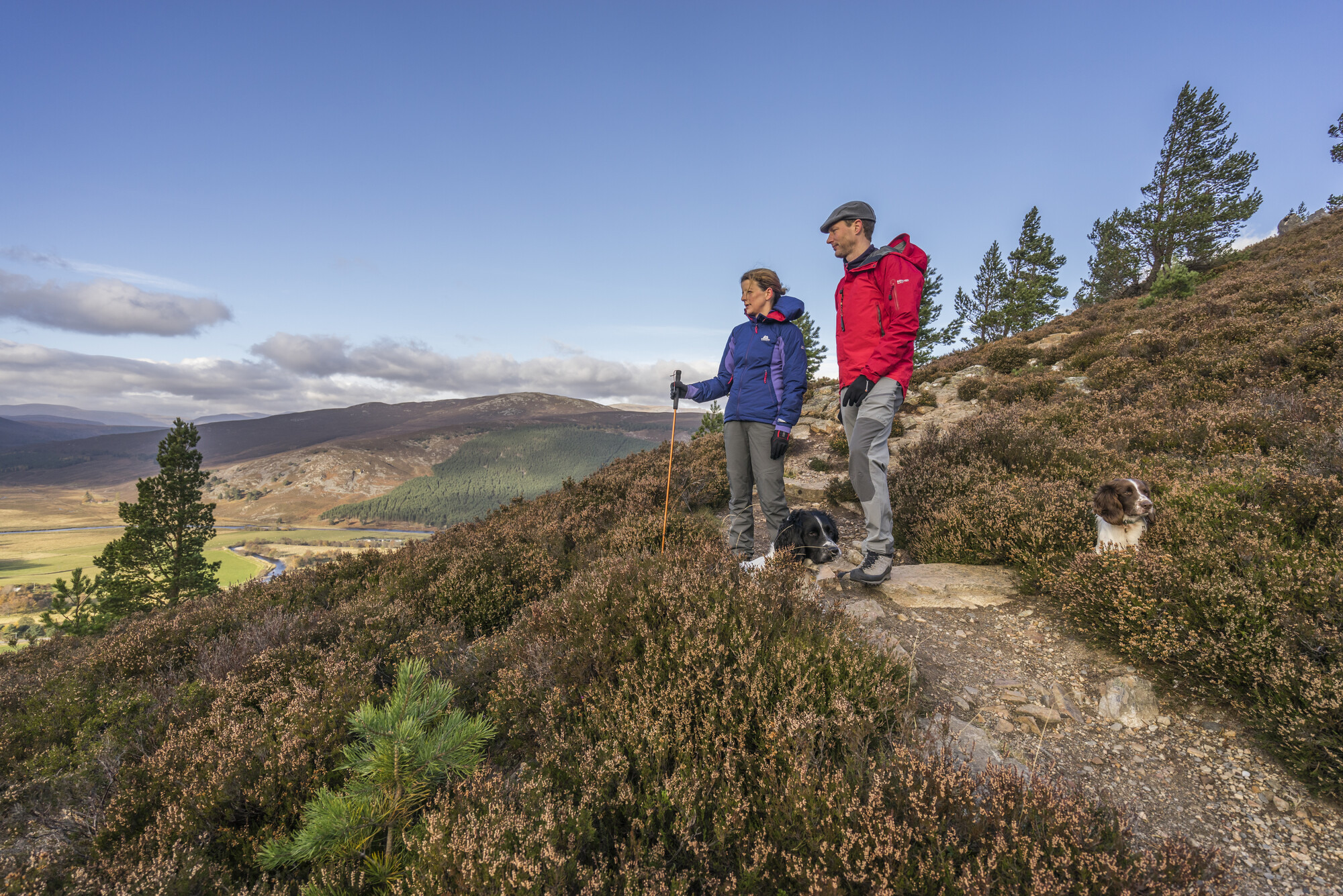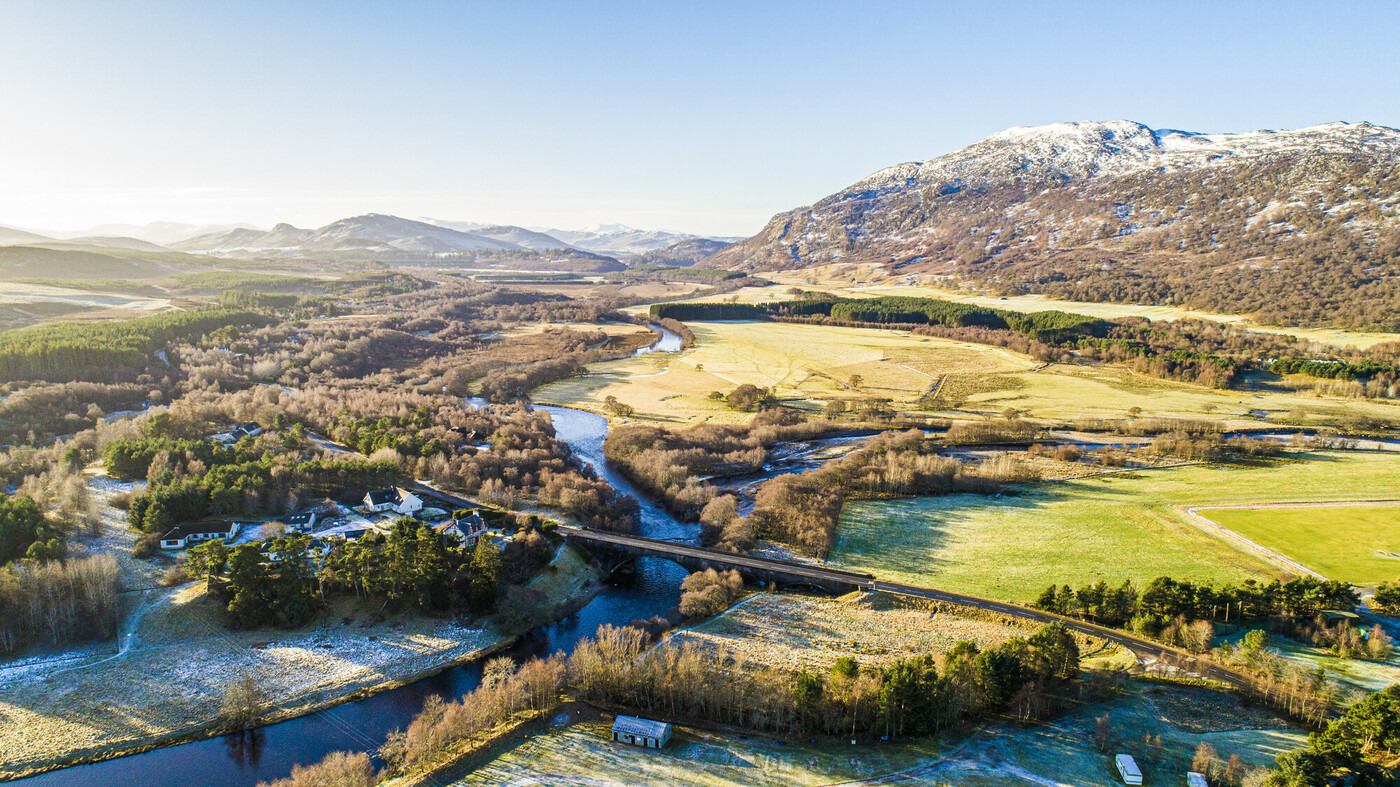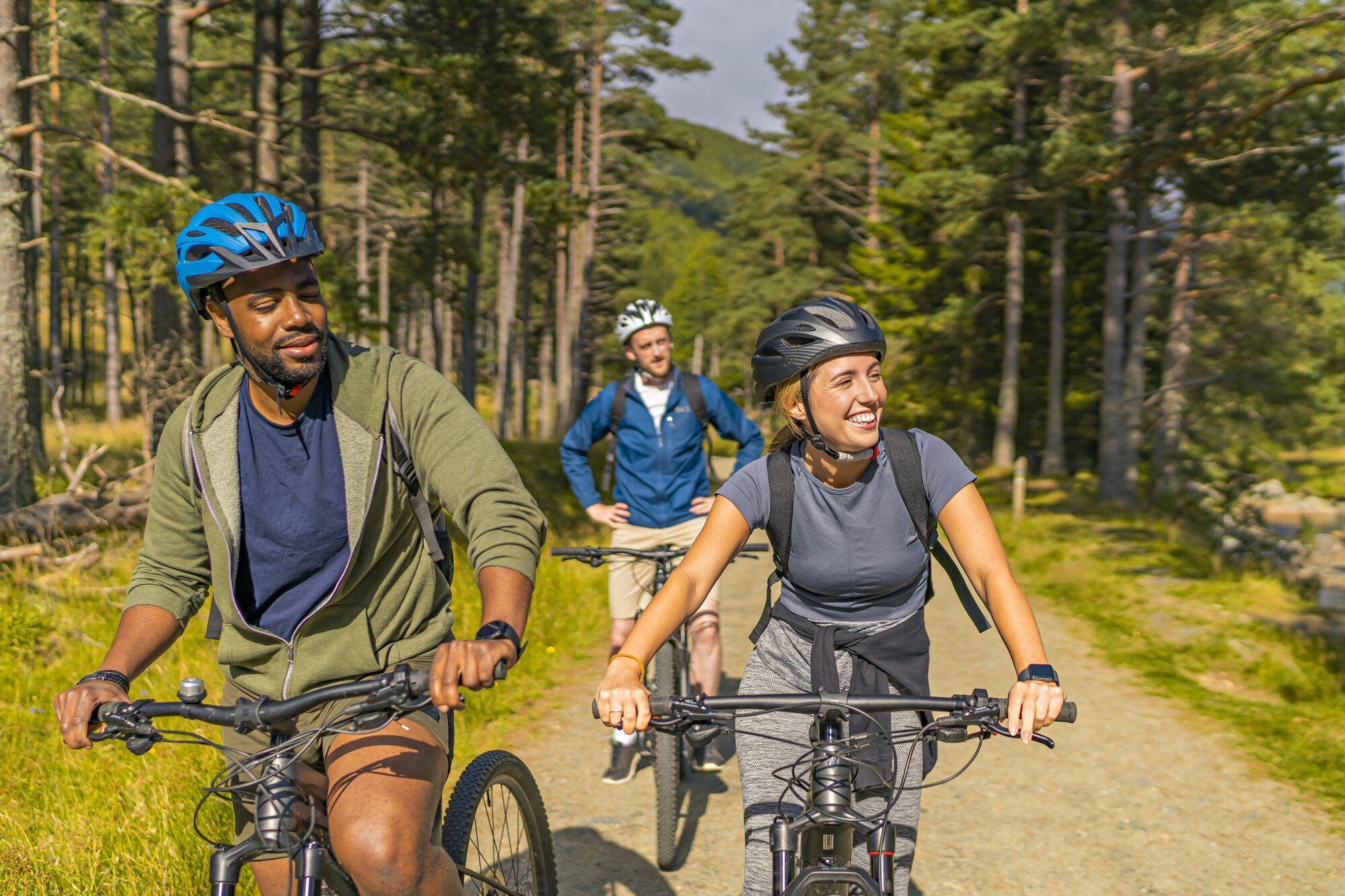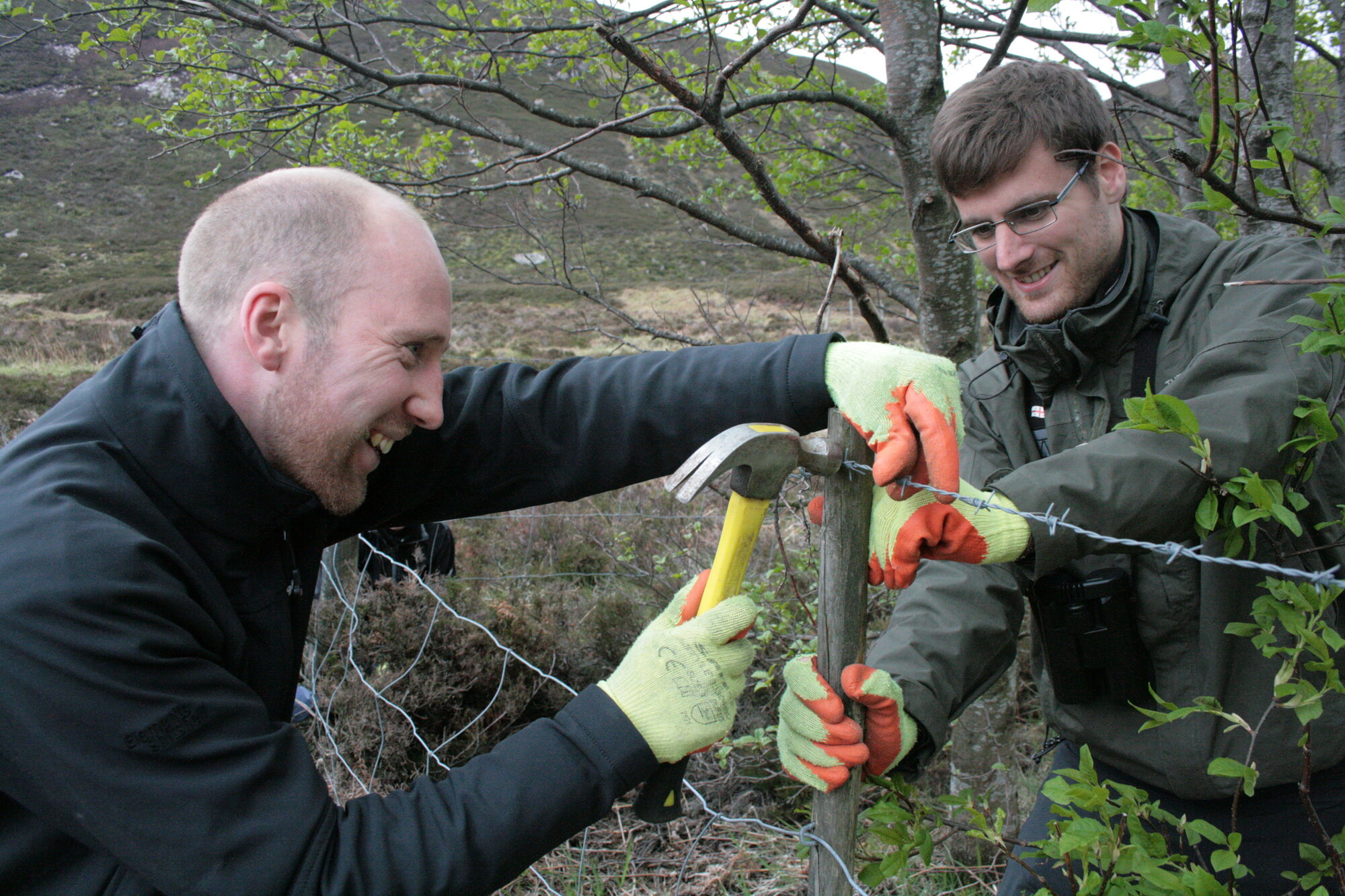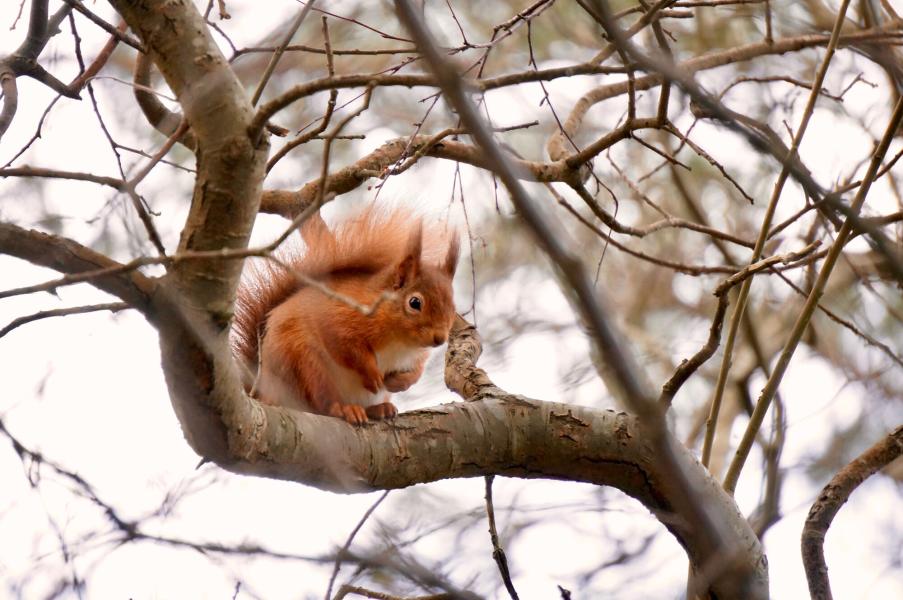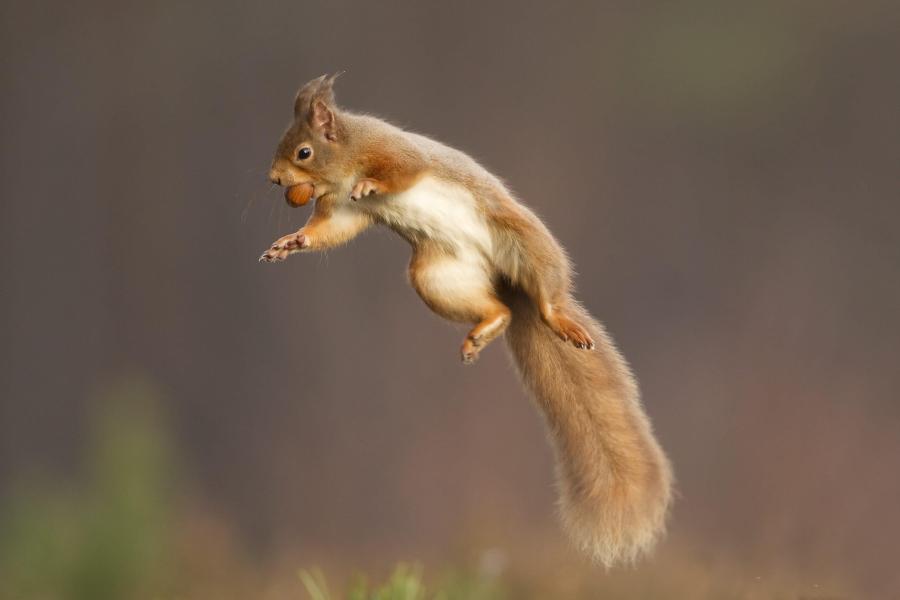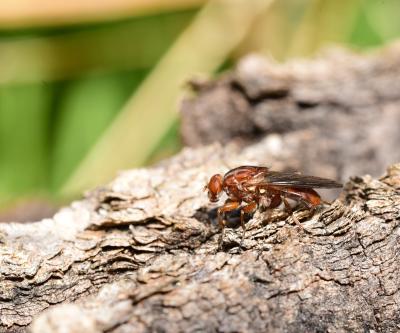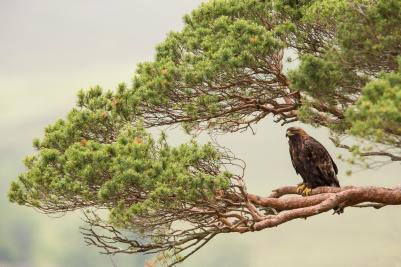Red squirrel
Sciurus vulgaris
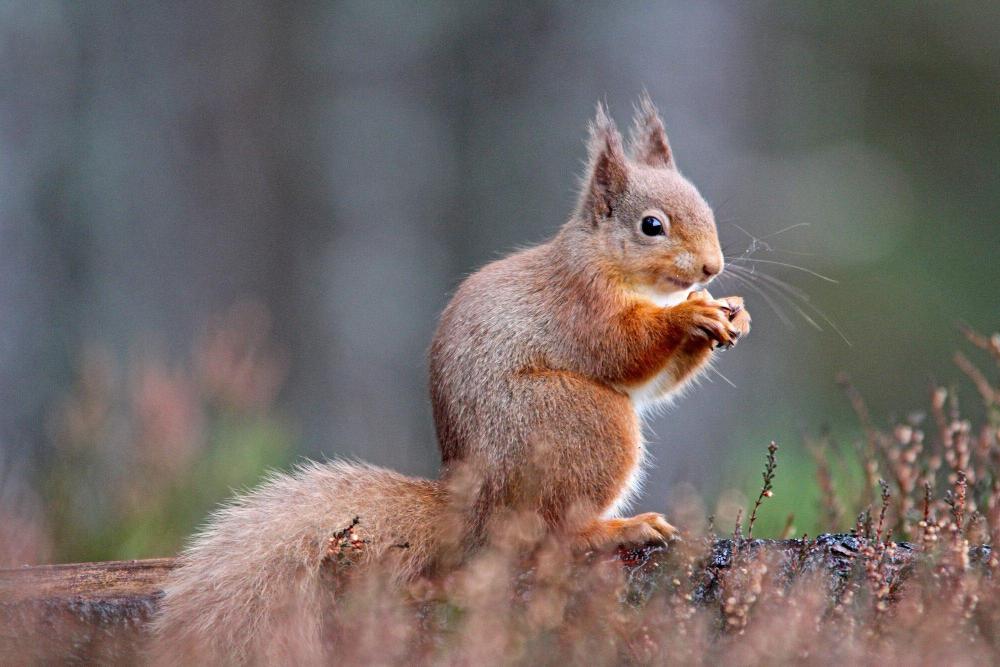
Red squirrels are the UK’s only native squirrel. They have lived in Britain since the end of the last ice age, when they spread north from southern Europe as forest cover expanded. Today they thrive in the Cairngorms National Park.
Factsheet
Weight: 300g
Lifespan: Three to five years
Best time to spot: Spring and autumn
With its red fur, large ear tufts and bushy tail, the red squirrel is one of the easier mammals to identify. They are quite shy and spend much of their time in the tree canopy, but it’s not unusual to spot one, especially in spring and autumn when they are most active.
Red squirrels are frequent visitors to bird and squirrel feeders in gardens, so residents who invest in nuts are usually rewarded by sightings of their playful behaviour. In spring, they’re out and about filling up on food after a winter of scarcity. In autumn they stockpile food, hiding fungi in trees to dry out before burying it along with foraged nuts and seeds.
Food finding is helped by the squirrel’s incredible sense of smell: they can sniff out food buried beneath the snow and easily detect rotten nuts. Red squirrels also eat shoots and fruits of shrubs and trees and sometimes even small birds and their eggs.
If you’re out for a woodland walk, you might hear a chewed pine cone hitting the floor - a tell tale sign that squirrels are nearby, nibbling on their favourite food. Listen out for the skittering of claws on tree bark, and look up to spot them scampering from branch to branch.
Did you know?
Red squirrels are the UK’s only native squirrel. They have lived in Britain since the end of the last ice age, when they spread north from southern Europe as forest cover expanded. Today they thrive in the Cairngorms National Park.
Factsheet
Weight: 300g
Lifespan: Three to five years
Best time to spot: Spring and autumn
With its red fur, large ear tufts and bushy tail, the red squirrel is one of the easier mammals to identify. They are quite shy and spend much of their time in the tree canopy, but it’s not unusual to spot one, especially in spring and autumn when they are most active.
Red squirrels are frequent visitors to bird and squirrel feeders in gardens, so residents who invest in nuts are usually rewarded by sightings of their playful behaviour. In spring, they’re out and about filling up on food after a winter of scarcity. In autumn they stockpile food, hiding fungi in trees to dry out before burying it along with foraged nuts and seeds.
Food finding is helped by the squirrel’s incredible sense of smell: they can sniff out food buried beneath the snow and easily detect rotten nuts. Red squirrels also eat shoots and fruits of shrubs and trees and sometimes even small birds and their eggs.
If you’re out for a woodland walk, you might hear a chewed pine cone hitting the floor - a tell tale sign that squirrels are nearby, nibbling on their favourite food. Listen out for the skittering of claws on tree bark, and look up to spot them scampering from branch to branch.
Did you know?
Red squirrels are generally solitary, living alone until they pair up during the mating season. Mating takes place from December to February and again in early summer. Until their teeth grow at 10 weeks old, squirrel kittens survive on their mum’s milk. They stay protected in their drey, a collection of sticks and twigs lined with moss and leaves.
Deforestation and the spread of the grey squirrel, imported from the US in Victorian times, have heavily impacted the national population. Grey squirrels are larger and more robust and can carry squirrel pox, which doesn’t affect them but is lethal to red squirrels. On top of this, the greys have a higher reproductive rate and live at much higher densities than red squirrels. The Cairngorms National Park, however, has proved to be a red squirrel refuge.
There are several reasons for this red squirrel success. Remnants of ancient Caledonian pine forest and more recent conifer plantations provide a food-filled habitat for these little acrobats. Grey squirrels have failed to spread far into the Scottish Highlands due to the relative lack of broadleaf tree cover.
The prevalence of pine martens in the highlands of Scotland, which preferentially prey on the larger, slower grey squirrels, may also benefit red squirrels by keeping numbers of their non-native competitors low.
